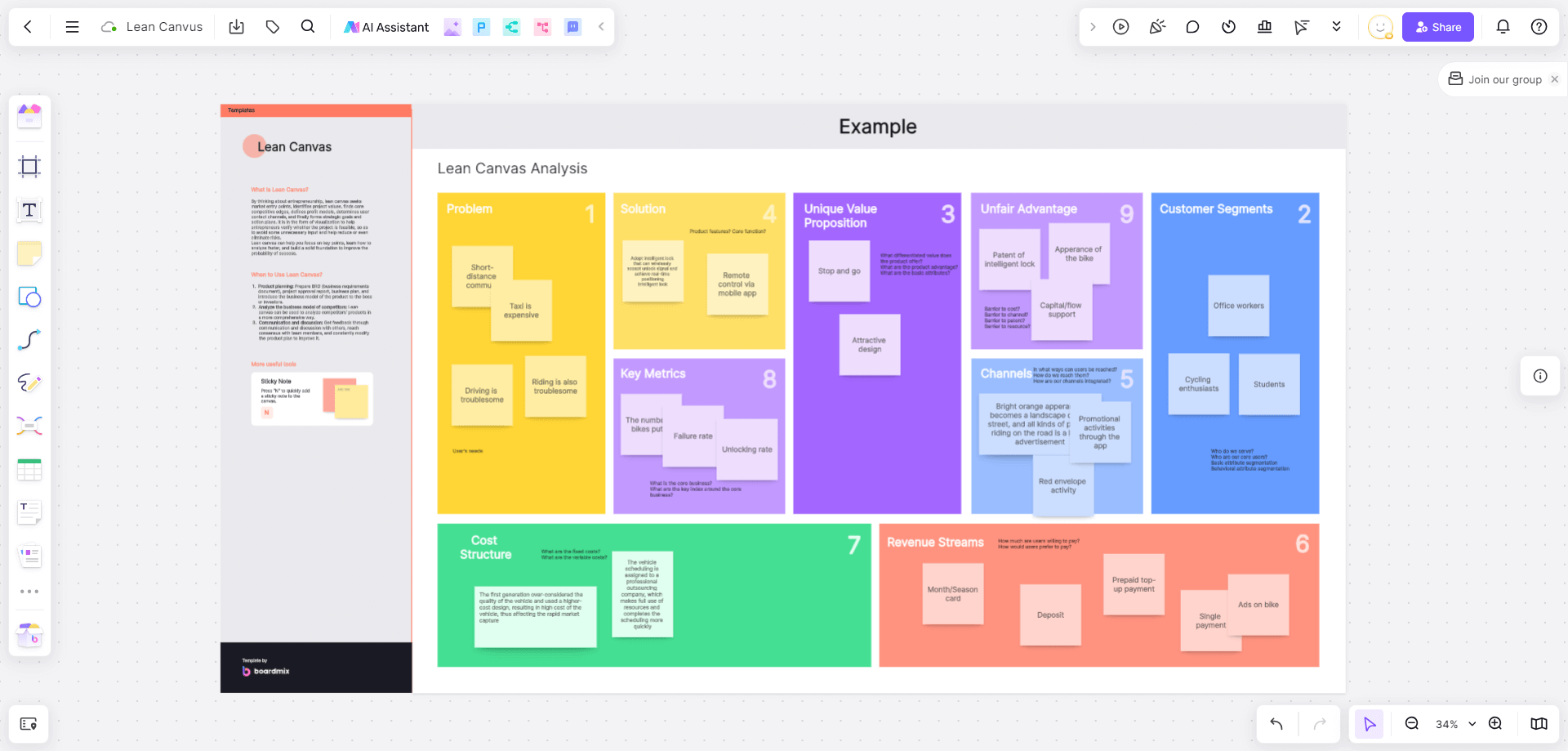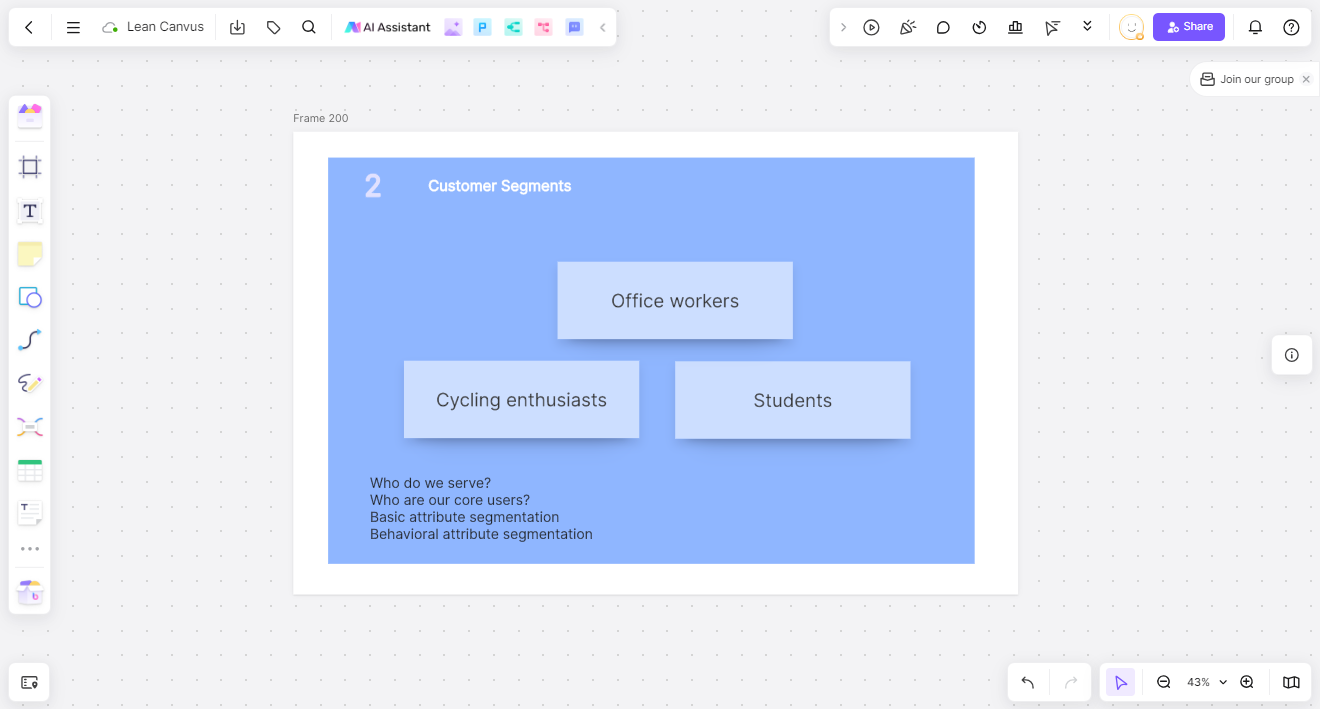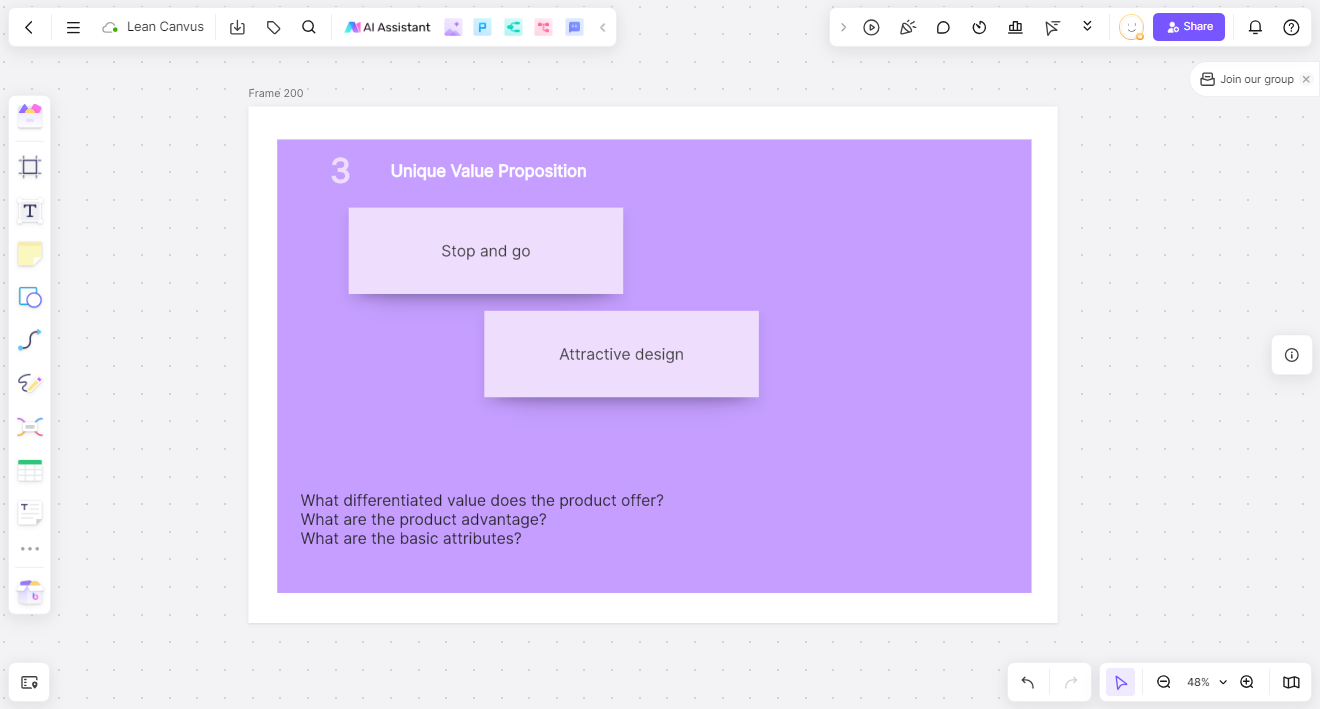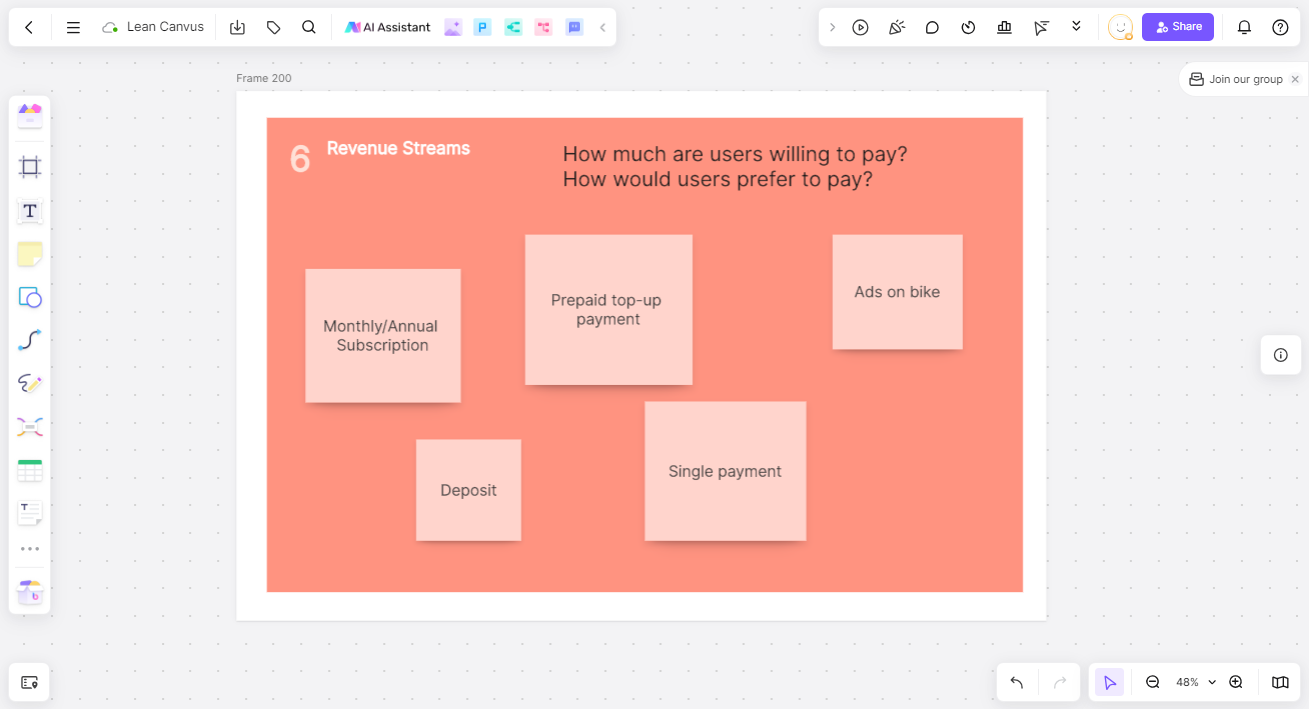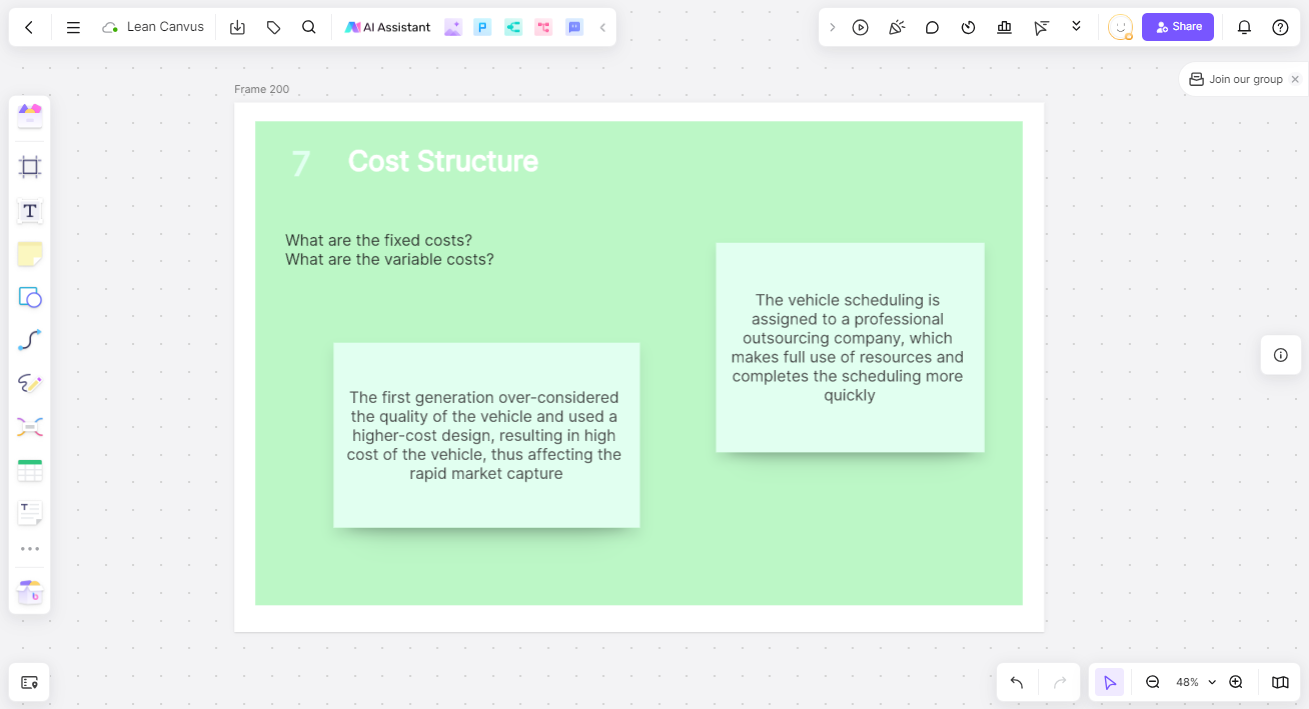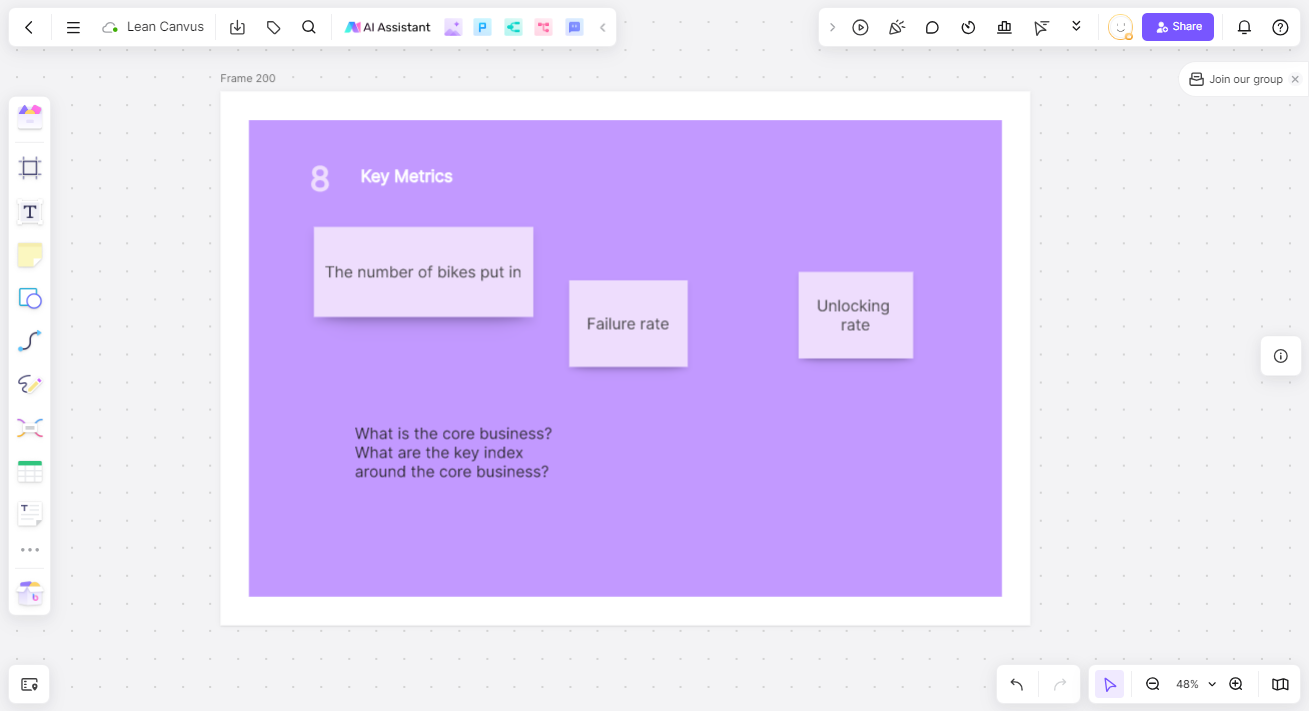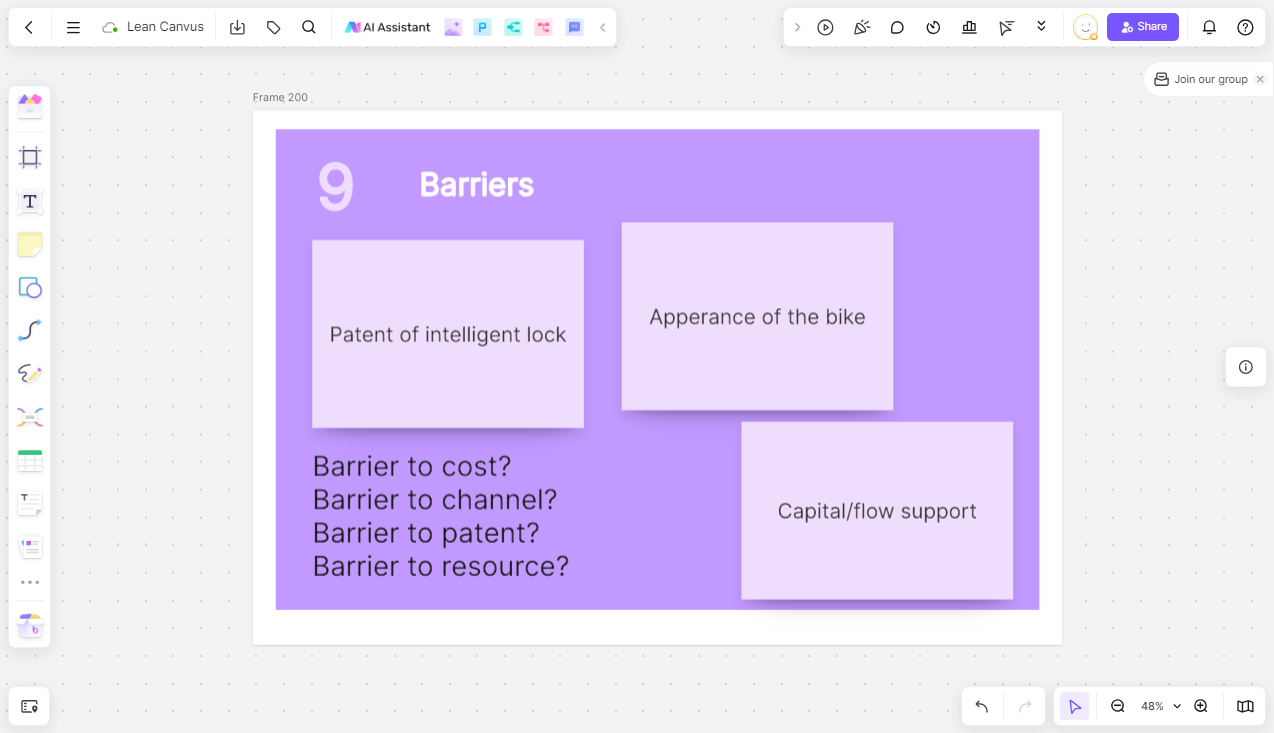The Lean Canvas is an efficient action guide and battle map for early entrepreneurs and has been used by many startups in Silicon Valley. In practical application, how can the Lean Canvas be kept from being just on paper, and how to truly find the entry point of the business model?
This article will take a real case - sharing bikes as an example, and use a professional and effective tool - Boardmix online whiteboard, which is a useful lean canvas generator to help everyone deeply understand how to use lean canvas template to dismantle the business model of the project and help start a business to improve the success rate of entrepreneurship. Comprehensive understanding of the lean canvas, a must-read for product managers!
What is Lean Canvas?
The lean canvas template is a one-page business plan template in the form of a nine-square grid that helps entrepreneurs research the business prospects of their products by listing problems and seeking solutions. It is closely consistent with the lean methodology and focuses on product-level business models, allowing entrepreneurs to plan and analyze products from a comprehensive, systematic, and commercial perspective, and establish an overall view, thereby focusing on completing actionable indicators and quickly turning ideas into products. It is a commercial product model that can be implemented on the ground.
To better use the advanced thinking method of the lean startup method, entrepreneurs can use the lean canvas template in the Boardmix online lean canvas generator, which can systematically help us solve the business prospects of the product.
Case background: Taking sharing bikes as an example, we use the lean canvas template in the Boardmix lean canvas generator to disassemble its business model to help product managers quickly find product analysis methods and implement ideas into business plans.
Lean Canvas Example: Sharing Bike
1. Problems
To analyze a product, you must first know what problems it solves. Entrepreneurs must propose at least three core user pain points that the product solves to generate business goals.
The main problems that sharing bikes solve are: in modern urban life, people face short-distance transportation problems, such as expensive taxis, troublesome driving, long walks, and troublesome maintenance and management of their own bicycles.
2. Customer Segmentation
A good product does not mean a universal product. Only by grasping the accurate customer scope can pain points be solved in a targeted manner. The main target groups of sharing bikes are students, office workers, and urban management departments.
3. Unique Value
When analyzing the attraction of a product, we can think from two perspectives: First, based on the analysis of competing products, what are the advantages of this product among similar products? On the other hand, from a user perspective, what kind of thorny problems does this product solve?
For example, sharing bikes’ unique appearance design, stop-and-go, and easy use by scanning the QR code are its unique selling points.
4. Solution

Based on identifying product pain points and selling points, we can find ideas for product solutions.
For example, sharing bikes can control its smart lock through its self-developed mobile APP and locate it in real time; it does not require a fixed dock to return the bikes, making it easier for users to borrow and return bikes.
5. Channel Analysis
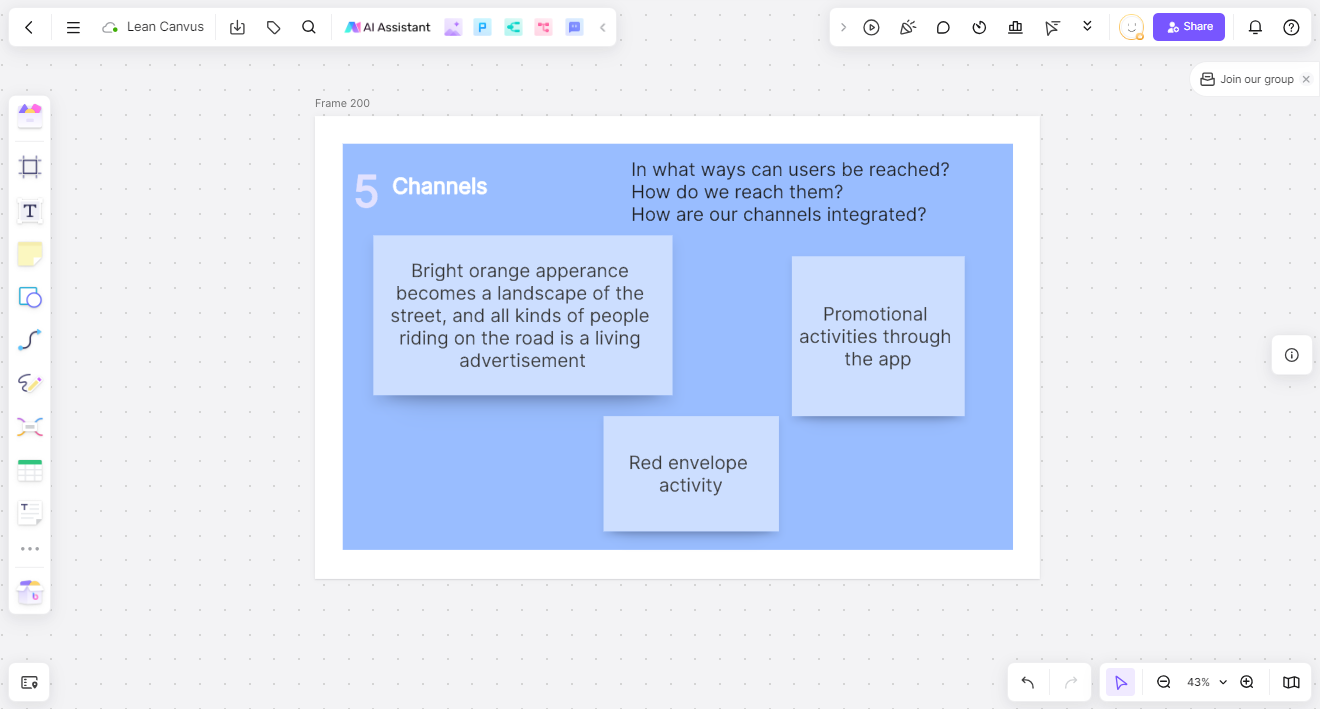
The most direct promotional channel is sharing bikes. When the vehicle is released in urban areas, its unique body shape is very eye-catching. At the same time, through the APP's preferential activities and user communication, more people will be attracted to join the ranks of sharing bikes and cycling.
6. Revenue Analysis
After the operation is stable and there is a certain user base, the profit model must be considered. For example, sharing bikes’ profit models include deposits, prepaid recharges, and single-ride consumption.
7. Cost Analysis
Hardware cost, operating cost, and labor cost are all issues that need to be considered during the operation and promotion period of the product. In the early stage, we need to use a lower-cost method to verify whether the product is needed by users so that we can quickly improve it in a low-cost way.
8. Key Indicators
The operation of a product, after it goes online, needs certain indicators to measure. For example, the number of sharing bikes bicycles launched, the number of active users, bicycle usage rate, bicycle failure rate, number of deposit refunds, etc. are all key indicators that help to share bikes make corrections to its bicycle products in order to understand the supply and demand of vehicles in real-time.
9. Barriers to Competition
If a product wants to not be imitated or surpassed within a period of time, it must form its own barriers.
For example, sharing bikes’ smart lock patent and the support of Sequoia Capital and Tencent behind it have absolute advantages in patents and capital flow. For other competitors, it is technically difficult and capital cost is high, making it difficult to surpass it in the short term.
By using the Lean Canvas Template to conduct a detailed analysis of sharing bikes, we can quickly find the core issues of sharing bike products. After completing the in-depth analysis of the 9 parts, we can fill in the analysis results and content into the lean canvas template in the Boardmix online lean canvas generator, and continue to present the analysis results intuitively and visually to help entrepreneurs in their analysis and decision-making. The launch of product projects plays a role in positive thinking. When thinking about product issues, we start from a system perspective and form scientific application logic to develop a business model with sustainable competitiveness.
Benefits of Using Online Lean Canvas Template
The lean canvas is not only a description and refinement of the business model, but also a very concise business plan. It can also be a strategic plan that guides the company's development direction and path.
(1) Get started quickly and complete easily
The Boardmix lean canvas template, by analyzing and answering the following nine modules, we can clearly understand the product's business model and understand the product globally, which is very convenient and fast.
(2) Quickly establish an overall concept of the product
The lean canvas template combines the internal and external influencing factors of the product, which can help us focus on analyzing the overall strategy of product development and predicting potential threats and opportunities for the product, and establishing an overall concept of product planning.
(3) Suitable for a variety of scenarios
Entrepreneurs can use it to write business requirement documents, project establishment reports, and business plans, and introduce product business models to bosses or investors.
To sum up, if you want to analyze and summarize the business model of a good product, you must try using lean canvas template! At the same time, with the help of the Boardmix online lean canvas generator, entrepreneurs can more easily formulate corporate strategy plans for specific issues.
What’s more, Boardmix’s community template center has built in a large number of rich and practical chart template tools, which can also help entrepreneurs complete business management work more efficiently. Now individual users can register for free and click on Boardmix to use it immediately!







